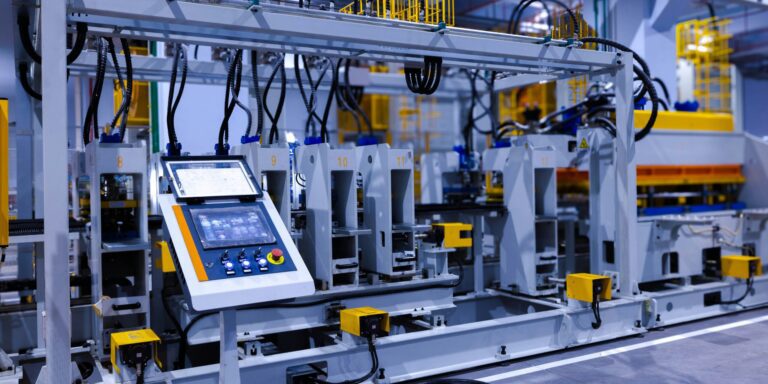As artificial intelligence (AI) and automation continue to reshape industries across the globe, New York’s manufacturing sector is undergoing a profound transformation. Over the past few years, businesses in the state have increasingly integrated advanced AI and robotics into their operations to boost productivity, reduce costs, and meet consumer demand more efficiently. This shift is not only revolutionizing the way goods are produced but also altering the workforce dynamics, with both opportunities and challenges emerging as a result.
The Rise of AI and Robotics in Manufacturing
In Brooklyn, a large automotive parts manufacturer is at the forefront of this transformation. The company has recently integrated AI-driven robots into its production lines, where they now perform tasks that were once carried out by human workers, such as assembly, welding, and quality control. These robots, equipped with sophisticated sensors and machine learning algorithms, can work with greater precision, speed, and efficiency than their human counterparts. This has allowed the company to increase output and reduce the risk of human error, which has resulted in improved product quality.
Experts predict that automation trends like these will continue to grow in the coming years, with more manufacturers across New York adopting AI and robotics to stay competitive in an increasingly globalized economy. The use of AI in manufacturing has already demonstrated the potential to drive significant improvements in productivity, while also providing companies with greater flexibility to adapt to changing market demands.
The Economic Impact and Workforce Shifts
Local business owners are optimistic about AI’s role in positioning New York as a leader in innovation within the manufacturing sector. “We’re positioning ourselves to be leaders in innovation,” said Mark Heller, CEO of the Brooklyn-based company. “While there are concerns about job displacement, we believe there are new opportunities for workers to adapt and thrive in this digital future.”
Heller’s optimism reflects a broader trend in the state’s manufacturing industry, where AI is seen not as a replacement for human workers but as a tool to enhance and support human labor. As automation takes over more routine and repetitive tasks, workers can focus on higher-level activities such as programming, machine maintenance, and decision-making. This shift is expected to create new jobs in fields such as robotics programming, AI system management, and data analysis, offering workers the chance to transition into more specialized, higher-paying roles.
However, the integration of AI and automation is not without its challenges. The implementation of these technologies requires significant investment in new infrastructure, employee retraining, and ongoing research and development. Additionally, while AI can increase efficiency and reduce costs for manufacturers, it also raises concerns about job displacement, particularly for workers in low-skilled positions.
Addressing the Workforce Transition
Industry leaders and policymakers have recognized that the transition to a more automated manufacturing sector requires thoughtful planning to ensure that workers are not left behind. Both state and federal governments are being urged to create policies that support workforce training in AI and robotics, helping workers develop the skills necessary to thrive in the digital economy.
In response, New York Governor Kathy Hochul recently announced a $10 million initiative aimed at training displaced workers for future job opportunities in AI and automation. This program is designed to equip workers with the skills needed to succeed in emerging fields, ensuring that they can take advantage of new job opportunities created by the rise of advanced technology.
“Ensuring that workers have the tools they need to succeed in a rapidly changing workforce is critical for New York’s long-term economic growth,” Governor Hochul said in a statement. “This initiative is a key step toward preparing our workforce for the high-tech, high-demand jobs of the future.”
A Vision for a High-Tech Future
New York’s emphasis on high-tech manufacturing and workforce development offers hope for a resilient and prosperous economy. As AI and automation continue to evolve, the state’s efforts to foster innovation while supporting workers through retraining programs will be key to ensuring that the benefits of these technologies are widely distributed.
Looking forward, New York aims to remain competitive in the global manufacturing landscape by leveraging AI, robotics, and automation to drive growth, create high-paying jobs, and sustain its economic resilience. The continued development of AI-powered manufacturing systems, combined with a skilled and adaptable workforce, will help position New York as a leader in the rapidly changing world of advanced manufacturing.
The push for a more advanced manufacturing sector also underscores the importance of ensuring that all workers—regardless of their current skills—are given the opportunity to succeed in an increasingly digital economy. By creating pathways to high-tech jobs and providing robust training programs, New York is setting an example for how to navigate the challenges of automation while ensuring a prosperous future for its workforce.
